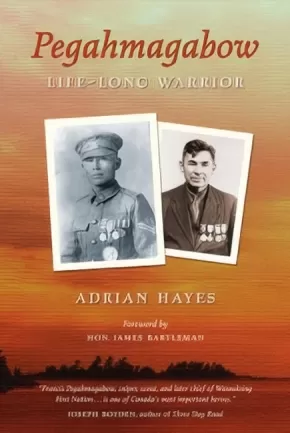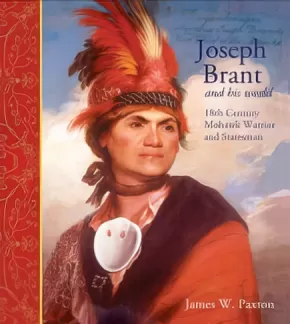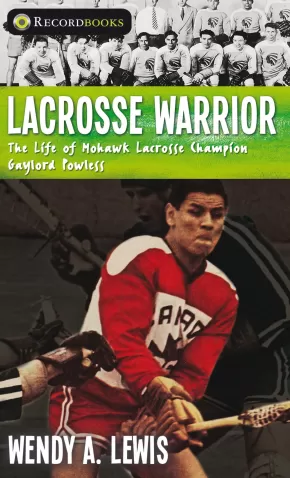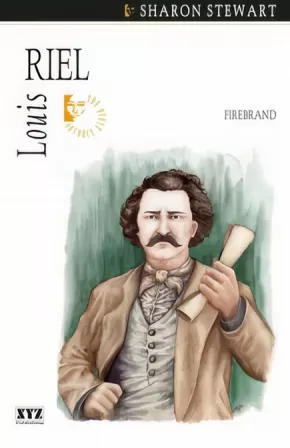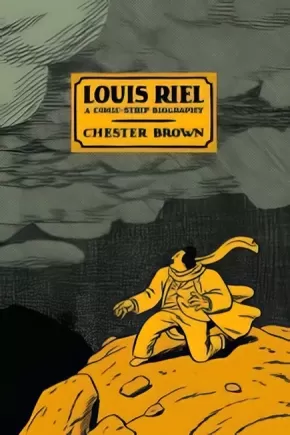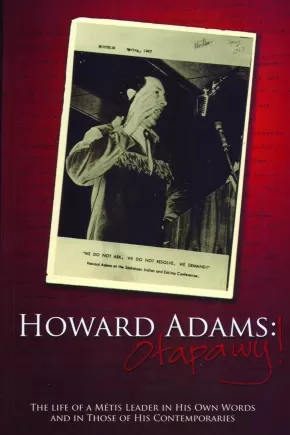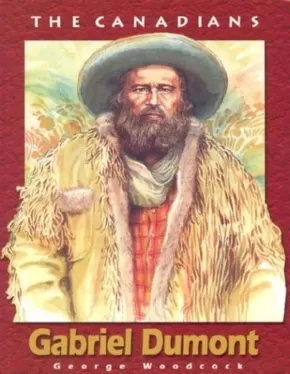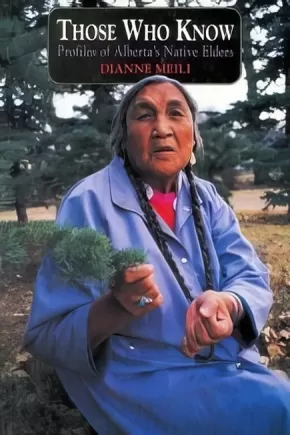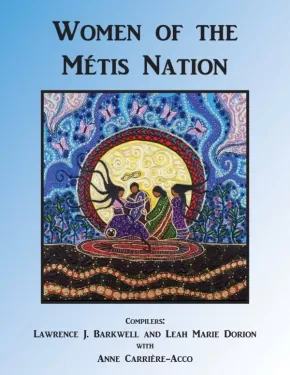Biographies
Synopsis:
Francis Pegahmagabow was a remarkable aboriginal leader who served his nation in time of war and his people in time of peace, fighting all the way. In wartime he volunteered to be a warrior. In peacetime he had no option. His life reveals how uncaring Canada was about those to whom this land had always been home. A member of the Parry Island band (now Wasauksing First Nation) near Parry Sound, Ontario, Francis served with the Canadian Expeditionary Force in Belgium and France for almost the entire duration of the First World War, primarily as a scout and sniper. Through the horrific battles and inhuman conditions of trench warfare, his actions earned him three decorations for bravery, the most ever received by a Canadian aboriginal soldier. More recently, they inspired the central fictional character in Joseph Boyden's highly acclaimed novel Three Day Road. Physically and emotionally scarred by his wartime ordeals, Francis returned to Parry Island to try to rebuild his life. He had been treated as an equal in the army, but quickly discovered things hadn't changed back in Canada. As a status Indian his life was regulated by the infamous Indian Act and by local Indian agents who seemed bent on thwarting his every effort to improve his lot. So, Francis became a warrior once more, this time in the even longer battle to achieve the right of aboriginal Canadians to control their own destiny. In compiling this account of Francis Pegahmagabow's remarkable life, Adrian Hayes conducted extensive research in newspapers, archives, and military records, and spoke with members of Pegahmagabow's family and others who remembered the plight and the perseverance of this warrior. Originally published by Fox Meadow Creations, Pegahmagabow emerges again in this new Blue Butterfly Books edition, which incorporates additional material and updates some aspects of this unforgettable story, and the confusion that still surrounds it.
Synopsis:
Tom Longboat was one of the greatest marathon runners of all time and one of the best known athletes in the western world in the early 20th Century. Longboat was an Onondaga who grew up on the Six Nations reserve near Brantford, Ontario. He was an astonishing long-distance runner as an amateur, he set records as a professional, and he served as a dispatch runner during World War One. This book tells the story of one of Canada's greatest athletes.
Synopsis:
Joseph Brant was a promising but undistinguished Mohawk warrior living in upper New York State. He became an innovative, influential leader and spokesperson for First Nations, whose support for Britain during the American Revolution led to their resettlement in Upper Canada along the Grand River. Their descendants live today on the large Six Nations Reserve alongside the Grand, south of Brantford in southwestern Ontario.
This new, illustrated biography of Brant reflects recent research into the political, social and cultural background of his life. Author James Paxton rejects the interpretation of earlier biographers, who depicted Brant as a man who belonged neither to the "Indian" or the "white" world. Paxton shows that Brant was fully Mohawk, with Iroquoian values that stressed the interdependence of people. He stands as the product of a unique, multicultural 18th-century community in the Mohawk Valley, New York.
Using skill and diplomacy and his dense network of relationships and alliances, Brant attempted to ensure the ongoing social, economic and political autonomy of the Six Nations in their new Canadian territory.
The events of Brant's day impinge directly on our own. It would be hard to imagine the standoff at Caledonia had Brant not led the Six Nations to the Grand River area and then invited Loyalists to settle among them. Yet, in 1784, Mohawks and Loyalists envisioned a different sort of community, one bound by history, common interest and shared practices. At a time when First Nations' claims against the government promise to become more numerous and confrontational, this book encourages us to consider the inclusive and multicultural legacy of Joseph Brant.
Additional Information
96 pages | 8.26" x 9.01"
Synopsis:
Gaylord Powless was playing lacrosse by the age of three. He descended from generations of Mohawk lacrosse players and possessed great skill, but his native ancestry made him the target of brutal checking, and slashing. This is a compelling story of how this champion learned to deal with emotions.
Ideal for reluctant readers.
Educator & Series Information
Recommended Ages: 12-18.
Fry Reading Level: 4.5
This book is part of the Recordbooks Series. Recordbooks help reluctant readers understand social issues through the lens of a true story of a sports hero.
Series features:
- Ideal for reluctant readers
- Hi-lo
- Short chapters, easy-to-read format
- Great for ESL and adult students
- Writing with a flair for making history feel like novels
- Accompanied by historical photos and sports trivia
- Ideal for ages 12+
Additional Information
120 pages | 4.25" x 7.00"
Synopsis:
Louis Riel devoted his life to the Métis cause. A fiery activist, he struggled against injustice as he saw it. He was a pioneer in the field of Aboriginal rights and land claims but was branded an outlaw in his own time. In 1885, he was executed for treason. In 1992, the House of Commons declared Riel a founder of Manitoba. November 16 is now designated Louis Riel Day in Canada.
Additional Information
208 pages | 5.50" x 8.50"
Synopsis:
The bestselling graphic novel on Canada's infamous folk hero is back in a paperback edition with a new cover by Chester Brown. Louis Riel: A Comic-Strip Biography is the book that launched the graphic novel medium in Canada. Brown received the Harvey Award for best writing and best graphic novel, and made several Best of the Year lists. Publishers Weekly hailed the book as a "contender for best graphic novel ever."
Chester Brown reinvents the comic book medium to create a historical biography on Louis Riel. He crafts a compelling and meticulous retelling of the charismatic 19th-century Métis leader, regarded by some as a martyr and by others as a treacherous murderer. Canadian history at its best, Louis Riel: A Comic-Strip Biography is entertaining and accessible for all ages.
"If you love to read a gripping story, if you are awed by the talent of an artist, then look no further: Chester Brown's Louis Riel is comix history in the making, and with it, history never looked so good." -Globe and Mail
Ages 14 and up
Synopsis:
Passionate and engaging, Howard Adams: OTAPAWY! is an immense contribution to our knowledge of modern Métis political consciousness and activism. In addition to being Howard Adams’ own record of his remarkable life, the book also contains many contributions by those who were touched by him as a friend, colleague, mentor, activist, political leader, teacher, and scholar.
Augmented by an interactive CD-ROM containing dozens of photographs and documents relating to Howard Adams’ life and work.
Educator Information
Grade Level: Secondary/Post Secondary/Adult
Additional Information
310 Pages | Nonfiction
Synopsis:
Born in St. Boniface in 1837 of French and Indian parentage, Gabriel Dumont's childhood was spent in the Saskatchewan country, where he grew accustomed to the semi-nomadic existence of the Métis. These were the proud days of the Métis nation, when its people roamed freely throughout the Prairies. The most stable social institution was the annual buffalo hunt with its rules. When Gabriel Dumont became head of the Great Saskatchewan Hunt in 1862 the end of the nomadic lifestyle was already in sight.
As the buffalo herds dwindled, the Métis began to form more permanent settlements, but were alarmed when their pleas for recognition of their land rights were ignored by Sir John A Macdonald's government. Dumont appealed to Louis Riel, leader of the Red River Rebellion.
Riel spoke up for the Saskatchewan Métis, but their petitions were ignored. In 1885, the Métis took up arms against the government forces. Dumont spurred the outnumbered rebels to several victories. After the Métis defeat, Dumont fled to the United States where he spent time with Buffalo Bill's Wild West Show until an amnesty was declared and he was able to return to his home.
Educator & Series Information
This book is part of The Canadians Series.
Recommended Ages: 10-13
Additional Information
64 pages | 6.50" x 8.50"
Synopsis:
The reader will experience first-hand the personality, characteristics, and sometimes remote environment of these healers, visionaries, storytellers, and spiritualists through Dianne Meili's faithful re-telling of the interviews she conducted with each during the two years she spent traveling throughout Alberta.
Suggested Grades: 10-12
ABPBC
Synopsis:
Métis Women are the heart and soul of the Métis people. Without them, there would be no Métis Nation. They are the strength behind our families, communities, and places of work. In the past, their kinship networks established where people settled and whom people married. Sovereign within their familial and community roles, they were the healers, the stewards of the land and its resources, the keepers of Indigenous knowledge, and the midwives who kept the Métis Nation nurtured, educated, and sustained. This tradition has continued into the present as Métis women have moved past their domestic and familial spheres into areas such as social advocacy, the arts, sports, law, post-secondary education, and entrepreneurship. Containing hundreds of biographies, Women of the Métis Nation is an ambitious role model book that documents more than 200 years of trailblazing Métis women.
Additional Information
235 Pages | Nonfiction

